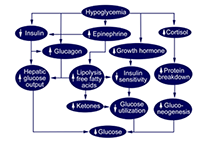Hypoglycemia. The scourge of nurseries and NICUs. Estimates are hypoglycemia occurs in 5-15% of newborns. There are potential short and long term developmental risk factors. There is uncertainty about what normal glucose levels are in newborns. There are variable treatment algorithms used for its evaluation and treatment. The evaluation of hypoglycemic babies requires separation of mom and baby. This often interrupts skin to skin time, an antagonist to hypoglycemia, and interferes with the establishment of breastfeeding. In the worst cases, intravenous fluids are required often with the newborn completely separated from the mother in a special care area or NICU.
Hypoglycemia offers PQCNC teams, collaborating together, a tremendous opportunity to standardize care within hospitals for this challenging problem, bring Newborn and NICU teams together, limit separation of mother and baby, support breastfeeding, encourage skin to skin care, consider evolving therapies like glucose gel and limit hospital days in the NICU. If we replicate the participation in Hypoglycemia that we have with ASNS, we can potentially impact the care of 5000 babies and mothers statewide. Join us in spreading best practices, partnering with patients and families, and optimizing resources.

